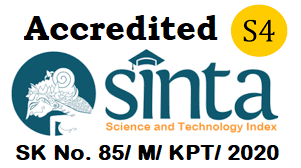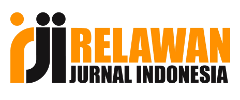Analysis of Business Development Strategy for The Blangkon Village, Klaten Regency
Abstract
Rapid economic growth requires an industry to be able to identify capabilities to maintain and develop its business. The Blangkon Village is a business that has been producing blangkon crafts since 2019. The products produced by The Blangkon Village are the Solo model blangkon and the Yogyakarta model blangkon. Currently, the phenomenon of wearing blangkon is increasing, for example, several regional governments have a policy that government employees are required to wear regional clothing according to predetermined dates. This will affect the volume of demand for complementary traditional clothing, one of which is the blangkon. This kind of phenomenon is one of the reasons why blangkon entrepreneurs continue to increase. Moreover, the development of social media offers many blangkon products with various qualities and prices. Therefore, to face market competition, The Blangkon Village is required to always be ready to face existing competition with the right strategy. The purpose of this research is to formulate appropriate strategies for business development at The Blangon Village. This research uses a combination of the AHP and SWOT methods. The results of this research show that The Blangkon Village is in quadrant I position so that the appropriate development strategy is the SO strategy. SO strategies that can be used include increasing the quality and quantity of production, always innovating products by paying attention to product quality, expanding marketing areas using access to information such as social media and actively participating in exhibitions, and maintaining consumer trust by improving product quality.
References
Cisara, A. (2018). Blangkon dan Kaum Pria Jawa. Jurnal Institusi Seni Indonesia Surakarta, 164-167.
Harisudin, M. (2019). Metode Penentuan Faktor-Faktor Keberhasilan Penting Dalam Analisis SWOT. Jurnal Ilmu-Ilmu Pertanian , 109-121.
Masitoh, S. (2022). Kemenparekraf: Ekonomi Kreatif menyumbang 7,8% PDB Nasional. https://nasional.kontan.co.id/news/kemenparekraf-ekonomi-kreatif-menyumbang-78-pdb-nasional.
Pahlevi, N. O. (2020). Strategi Pengembangan Bisnis dengan Metode Analisis SWOT (Strenghts, Weakneses, Opportunities, Threats) dan AHP (Analytical Hierarchy Process) (Studi Kasus : PT RINS). Eprints Universitas Muhammadiyah Surakarta.
Prastiwi, R. F. (2020). Analisis Strategi Pengembangan Usaha Mikro Kecil Menengah Sektor Industri Jenang Krasikan Menggunakan Metode SWOT (Studi Kasus di Sentra Industri Jenang Desa Tangkisan). Jurnal Aplikasi Teknik Industri, 44-57.
Prathama, R. R. (2022). Strategi Pengembangan Usaha Konveksi Yahyuti Menggunakan Perhitungan Simple Additive Weighting Dalam Kerangka Analisis Swot. Iteks STT Wiworotomo.
Sardjono, D. (2022). Produk Lurik UMKM Klaten Tembus Pasar Internasional. https://mediaindonesia.com/nusantara/526745/produk-lurik-umkm-klaten-tembus-pasar-internasional.
Sartika, S. H., & dkk. (2022). Ekonomi Kreatif. Medan: Yayasan Kita Menulis.
Syam, A. M. (2018). Pengembangan Industri Kreatif Songkok Recca di Desa Pancing Kecamatan Awangpone Kabupaten Bone. Repository UIN Alauddin Makassar.

This work is licensed under a Creative Commons Attribution-NonCommercial-ShareAlike 4.0 International License.












